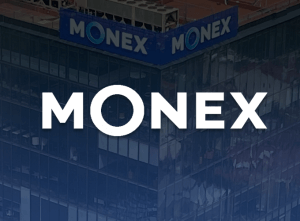The new normal – a look at global markets. Guest Editorial
Wild equity markets, Forex volatility, and economic uncertainty all define the moment. But for how long? asks Michael Buchbinder at Scandinavian Capital Markets

By Michael Buchbinder, Managing Director, Scandinavian Capital Markets
We’ve seen the havoc wreaked on the equity markets these last few months. The U.S. saw indexes plunge into bear market territory faster than any time since Black Monday in 1987. The worst took place recently, with crude oil futures contracts trading below -$40 a barrel for West Texas Intermediate.
Volatility remains at extreme levels even after contracting significantly. Leveraged products like options and contracts for difference (CFDs) have seen a spike in volume. Yet, that hasn’t necessarily led to better results. With huge gaps overnight, traders can quickly find themselves facing margin calls.
On the other hand, Forex experienced pretty massive swings. Traders managed through some of the biggest price shifts in the past several years.
Yet, history says that markets should revert to normal. But what is this new normal? What does it look like for traders and investors in various financial instruments around the globe? For that matter, what does it mean for economies?
Economic Realignment
There’s no doubt that we’ve all been psychologically changed by the pandemic. Anyone who’s gone outside with a facemask just to pick up groceries understands the change.
Undoubtedly, the travel industry will feel the biggest shifts. Airlines will need to consolidate operations just to remain profitable. They’ll constantly be struggling while running at reduced capacity.

As with airlines, brick and mortar stores face a serious challenge covering fixed costs. Both retail and airlines rely on capacity utilization to drive profitability. With likely changes in how many people can be crammed into an airplane or shop at once, we should expect many to go online or go under. Likely, the ones with the best balance sheets and business models will weather the storm.
In the near-term, international trade may become challenging. The political tensions between China and global players may not abate any time soon. That could disrupt supply chains, causing supply-side inflation in some cases. While companies work to realign their operations, there will be an increased reliance on local suppliers, both from governmental advocacy and as a practical matter.
However, opportunities do arise within these perilous times. The work-from-home movement gathered quite a bit of steam in recent weeks. As employees get accustomed to working out of their homes, we’ll likely see increasing pressure on companies to accommodate this lifestyle change. That creates growth opportunities for companies that enable remote work. It also makes online commerce more likely as individuals purchase goods from their homes rather than go out.
The New Monetary Policy
In their effort to fight a global slowdown, governments released eye-popping sums of fiscal stimulus. The U.S. alone set out over $2 trillion as direct aid and lending to citizens and companies.
Yet, they aren’t even close to the biggest spenders out there. Germany spent 60.1% of its GDP on fiscal stimulus compared to the U.S. at 14.3%. France came in second with 25.8% of GDP. And that doesn’t cover the liquidity added by central banks, which in many cases equaled or exceeded those levels.
Central banks who weren’t already at or below zero quickly dropped their rates while unleashing a barrage of tools meant to lubricate debt markets. Yet, some proceeded cautiously, aware that they walked a fine line between direct purchases of assets and propping up firms that needed to be cleared from the system.
Any idea that global interest rates might have returned to historical norms have been dashed for at least the next several years. That’s poured a torrent of cash into the systems. Yet, some of the issues we face globally might be supply-side driven. Unfortunately, that sits outside of the central bank’s’ sphere of influence.
Equity Excess
Global stocks divided into two categories over the last decade: the United States and everyone else. No other global market experienced a perpetual increase in stock prices the way the U.S. did. It afforded their central bank some leeway to raise rates above zero for a time.
If you were dropped into the market post-2010, you would have known little in terms of volatility. In fact, one of the hallmarks of the last several years has been a complete lack of it. That’s part of what led to volatility ETFs blowing up in 2018 on a quick spike in the S&P 500 volatility index.
The calm, upward trend lulled many traders and investors into a false sense of security. More and more leverage was added through various instruments from option contracts to CFDs. Inevitably, that led to serious problems when things fell apart.
Prohibited in the U.S., CFDs primarily trade in timezones that don’t align with U.S.markets. That’s fine when traders work with equities within their regions. However, when you start playing in timezones outside of your working hours, you risk overnight gaps and movements when you aren’t around to manage the trade. There’s also the real risk of certain equities being halted during a session. That’s not to mention the liquidity issues that exist with CFDs, having your account pooled with others leading to margin risk from other accounts, as well as general counterparty risk.
On top of this, option contract and CFD contract counterparties constantly need to hedge their risk. That’s suspected to be one of the reasons behind the depth of the recent selloff. As traders picked up the right to sell contracts and bearish bets on equities, sellers were forced to short-sell stocks to manage their risk.
Another Day In Forex
Ironically, the Forex market is used to large movements. True, volatility certainly increased with the equity selloff and global pandemic. But, in 2015, Forex traders and brokers dealt with a major dislocation in the Swiss Franc.
That’s not to say that Forex isn’t immune to the issues we’re facing. No one can accurately forecast how economies and money supply and demand will look in the future. There are far too many variables considering potential waves of the pandemic and further actions by various central banks.
Still, it removes many of the issues plaguing CFDs. Forex is the most liquid market in the world, trading virtually 24/7, plus there’s always currencies with action in the local timezone. B-Book brokers do create counterparty risk, while straight-through-processors (STPs) less so (it does still exist, but is passed to much larger financial institutions).
You might think that with supply chains adjusting to the new realities, there would be less inter-country commerce. Yet, some countries simply don’t have the physical and intellectual resources available. With populations continuing to grow, the demand for worldwide trade means foreign exchange will remain a powerful tool in the future.
Commodity Complex
One place that’s sure to get a rude awakening is the commodity space. At the forefront, we see global oil prices plummeting to historic levels. The lack of demand from economic lockdowns upended a fight between Saudi Arabia and Russia to increase production. That exacerbated the problem to a point of no return.
In April 2020, crude oil contracts for current month delivery traded below $0 for the first time ever. Several oil funds went under that same day. Yet, the problem still persists. The time it takes to slow down won’t impact the glut in time. It’s expected that storage facilities in the U.S will reach capacity sometime in May.
Globally, that puts pressure on those countries’ revenues and currencies. Those with more diversified economies stand a better chance of weathering the storm. Yet, many exist in precarious political climates where these economic declines could create true calamity.
Interestingly, the problems of supply and demand might not be limited to oil. There are growing signs of issues in the gold market as well. The gap between the spot price of gold and futures has widened over the past several months. The U.S. Commodities and Futures Trade Commission adjusted rules to allow for gold trading backed by fewer assets on hand. That’s led to the concern of delivery problems arising in the near future where gold would need to be transported from London to Chicago.
Final Thoughts
Much of what we need to know still lies ahead. Companies continue to grapple with uncertainty as they attempt to navigate our new climate. It’s not unlikely we’ll see financial markets disconnect for periods of time on excess exuberance or pessimism. Inevitably, things will find an equilibrium.
The subject matter and the content of this article are solely the views of the author. FinanceFeeds does not bear any legal responsibility for the content of this article and they do not reflect the viewpoint of FinanceFeeds or its editorial staff.









